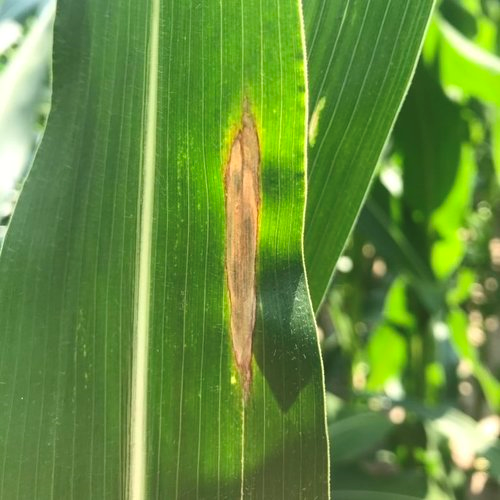Northern corn leaf blight (NCLB) is a disease of corn caused by the fungus Exserohilum turcicum. It can cause yield loss if it develops before or during the tasseling and silking phases of corn development. The fungus overwinters in infected leaves, sheaths, and husks from previous years. Spores produced on the residue or on diseased plants in the field can be splashed to new leaves higher on the plants or blown by the wind over long distances to neighbouring fields. Under favourable conditions (moderate temperatures 18°C-27°C with prolonged periods of rain or humidity) the disease forms lesions. Characteristic lesions can range from 1 inch to more than 6 inches long and run parallel to the leaf margins, beginning on the lower leaves and moving up the plant. They may coalesce and cover the enter leaf. lesions are not restricted by leaf veins and the pathogen does not need a wound to infect the plant. As lesions mature, their color may change to tan and fungal spore production may become visible in the middle of lesions, giving them a darker, dusty appearance.

.png?height=120&name=AgroScout_logo_Big_High_Resolution-(1).png)